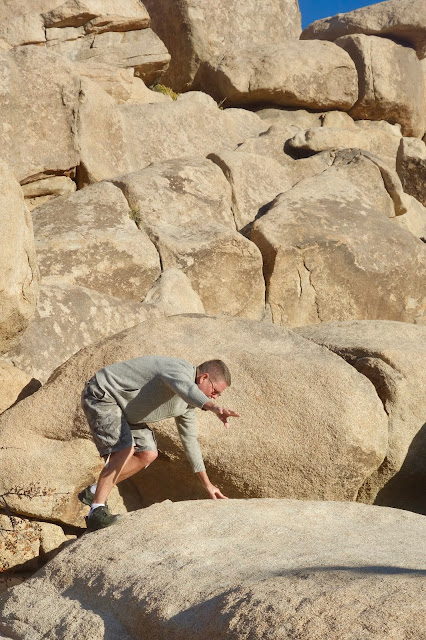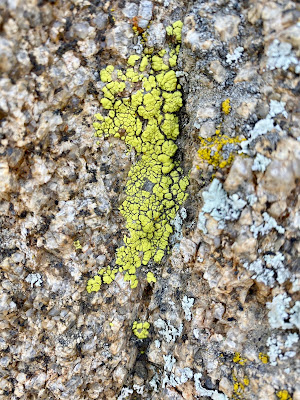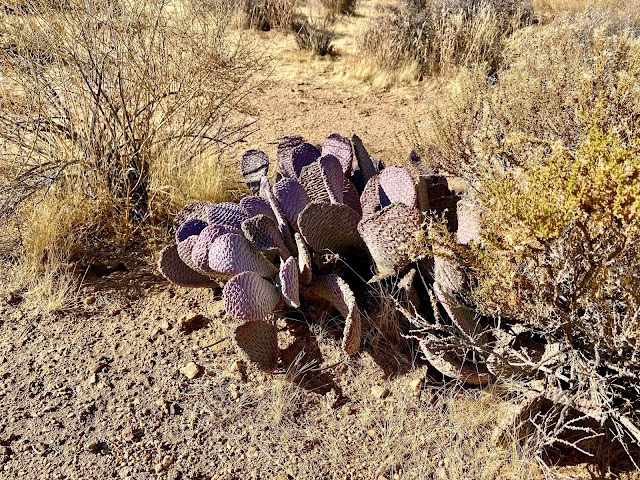Next stop: Cap Rock. Joshua trees, which grow only 2-3 centimeters annually, are more plentiful in the northern section of the park.
With the sun low in the sky, the Joshua trees cast snake-like shadows.
Park rangers couldn't tell us definitively how this area got its name, except to say that there may have been some serious climbing accidents here in the 70s.
These rock formations, shown here with both front and back lighting, are higher than they look.
In heavily trafficked areas, park rangers water new growth. It takes nearly 80 years for a Joshua tree to mature!
Which makes this the equivalent of a 55+ retirement community.
We marveled at the vegetation
. . . and frightened the breakfasting bunnies!
The light was wrong for photographing Skull Rock from its best side.
The Arch is another major hiking destination.
Visitors leave behind their own rock formations.
Don't get too close to the cholla cactus at the park's southern end.






















No comments:
Post a Comment